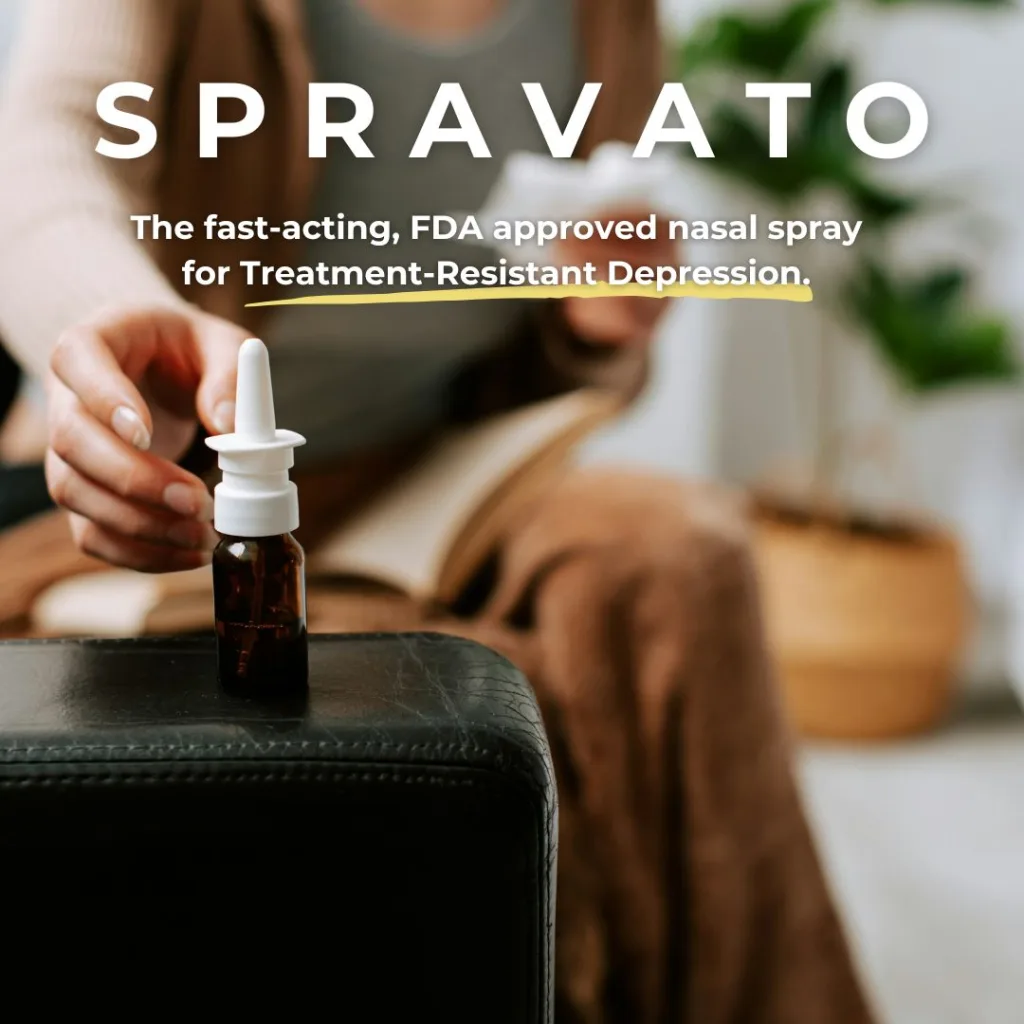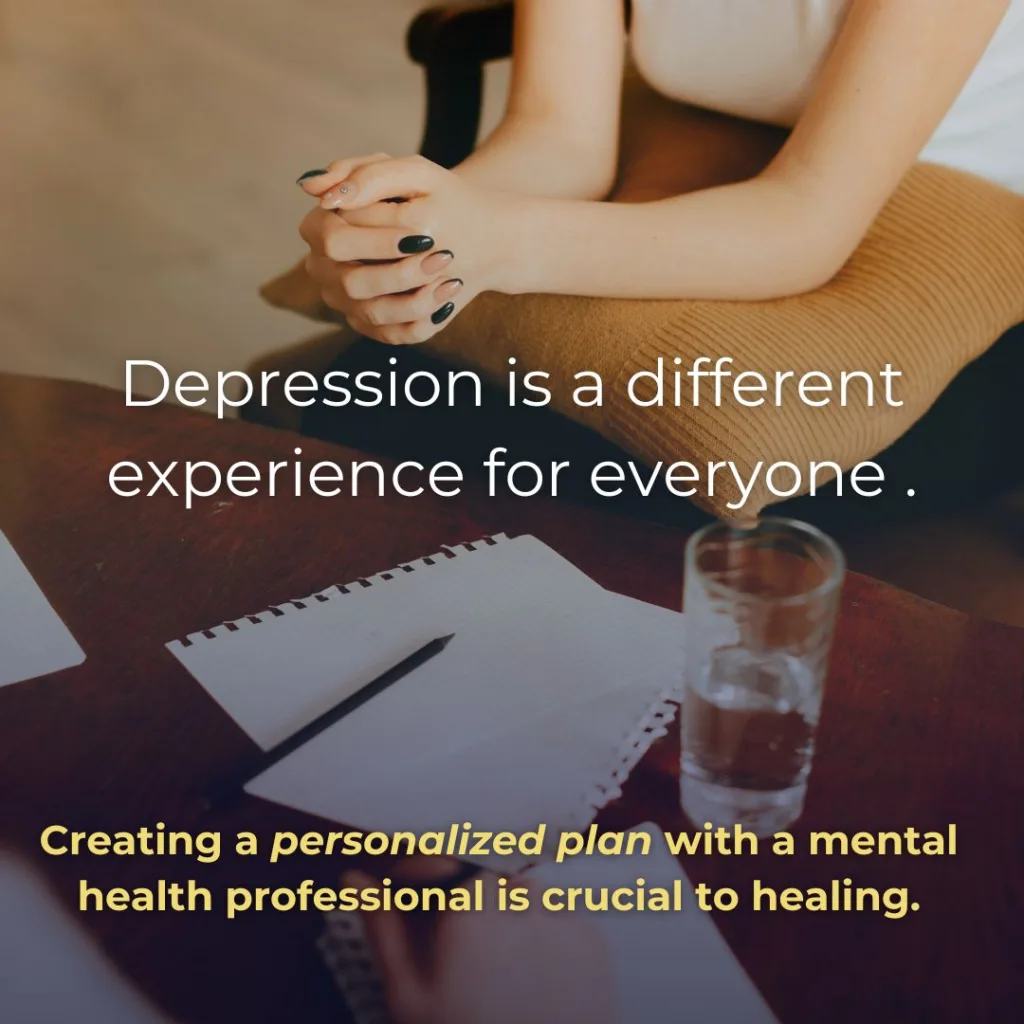Have you ever felt like nothing seems to work in managing your depression?
If you’ve tried traditional antidepressants without success, you’re not alone. For many, finding the right treatment can feel like an endless uphill battle. That’s where Spravato comes in a therapy designed specifically for individuals struggling with treatment-resistant depression.
When I first learned about Spravato, I had my doubts. Is it really effective? How safe is it? What would the experience actually feel like? These are questions many of us have when considering a new approach to mental health treatment.
In this blog, I’ll help you uncover the truth about Spravato, breaking down the myths and giving you a glimpse of what life is like during treatment. Whether you’re looking for hope or just want clarity, this guide is here to offer you real answers, based on facts and real-life experiences. Let’s explore together how Spravato could change the way you view depression treatment.
What Is Spravato?
If you’ve been battling treatment-resistant depression, you might feel like you’ve run out of options. That’s where Spravato offers a glimmer of hope.
Spravato, the brand name for esketamine, is an FDA-approved nasal spray specifically designed for individuals who haven’t responded well to traditional antidepressants. Unlike oral medications, which can take weeks or even months to show results, Spravato often works much faster.

How Does Spravato Work?
Spravato targets a unique pathway in the brain. Traditional antidepressants primarily focus on increasing serotonin levels, but Spravato works on the N-methyl-D-aspartate (NMDA) receptors—part of the glutamate system. This approach can help restore synaptic connections in the brain, which are often weakened by prolonged depression.
Think of it as “rewiring” parts of your brain that have been disrupted by depression. This novel mechanism is why Spravato is considered a game-changer for those who haven’t found relief elsewhere.
Who Is Spravato For?
Spravato is intended for individuals diagnosed with treatment-resistant depression, meaning they’ve tried at least two different antidepressants without significant improvement. It’s also used alongside a traditional oral antidepressant as part of a comprehensive treatment plan.
How Is Spravato Different From Traditional Antidepressants?
- Faster Relief: While many antidepressants can take weeks to kick in, Spravato often begins to show effects within hours to days, especially for acute symptoms.
- Different Mechanism: Traditional medications focus on serotonin, while Spravato works on the glutamate system to create new neural connections.
- Administered Under Supervision: Unlike pills you take at home, Spravato is administered in a controlled clinical setting to monitor your response and ensure safety.
For those seeking an alternative to medications that haven’t worked, Spravato represents a cutting-edge option that could finally provide the relief they’ve been searching for. Learn more about depression symptoms and treatment options in our Depression 101 blog.
Common Myths About Spravato
When it comes to a groundbreaking treatment like Spravato, it’s natural for myths and misconceptions to emerge. Let’s tackle some of the most common myths and uncover the truth about this innovative therapy.
Myth: “Spravato Is Just Another Quick Fix.”
Reality: While Spravato can work faster than traditional antidepressants, it’s far from a one-pill solution. This treatment is most effective when combined with ongoing therapy, lifestyle adjustments, and other prescribed antidepressants. Think of it as a key component in a holistic approach to treating depression rather than a standalone cure.
Spravato addresses the biological aspects of depression by repairing damaged brain connections, but emotional healing often requires the added support of therapy. Regular clinical check-ins also ensure the treatment stays aligned with your mental health goals.
Myth: “Spravato Is Dangerous and Addictive.”
Reality: Safety is a top priority with Spravato. Unlike medications taken at home, Spravato is administered in a controlled clinical setting under strict medical supervision. Each treatment session includes monitoring before, during, and after the dose to ensure patient safety.
While Spravato contains esketamine, a derivative of ketamine, its use is closely regulated, and the dosage is tailored to therapeutic needs. The treatment is designed to minimize any risk of dependency.
Myth: “Spravato Works for Everyone.”
Reality: While Spravato offers hope to many, it’s not a universal solution. Individual responses to the treatment can vary. Some people notice significant improvements quickly, while others may need multiple sessions to see changes.
A thorough evaluation with a healthcare professional is essential to determine if Spravato is the right fit for your unique situation. This personalized approach ensures that you’re pursuing the treatment path most likely to benefit you.
If you’re considering Spravato or other mental health treatments, start your journey by booking an appointment with PsychPlus to discuss your options.
The Daily Life Realities of Spravato Treatment
If you’re considering Spravato, you might wonder how it fits into daily life and what to expect during treatment. Here’s a clear picture of the treatment process, possible side effects, and how this therapy integrates into everyday routines.
What Does a Typical Spravato Session Look Like?
Spravato is not a treatment you can take at home—it’s administered in a clinical setting under medical supervision. Here’s what happens during a typical session:
- Pre-Treatment Check: Upon arrival, your healthcare provider will evaluate your current mental and physical state to ensure you’re ready for the session.
- Administering Spravato: The nasal spray is self-administered, but your care team will guide you through the process.
- Observation Period: After taking Spravato, you’ll remain in the clinic for at least two hours. During this time, you’ll be monitored for side effects or reactions. Some people find this period relaxing, often using it for journaling, meditation, or light conversation.
- Post-Treatment Care: Since Spravato can cause temporary side effects like dizziness, you’ll need someone to drive you home after each session.
What Are the Possible Side Effects?
Like any medical treatment, Spravato may have side effects, but they are generally manageable. Common side effects include:
- Dizziness or lightheadedness
- Nausea
- Fatigue or drowsiness
- Temporary disassociation or mild hallucinations
These effects usually subside within a few hours. Your healthcare provider will offer guidance on managing them and ensuring your safety during and after the session.
How Does Spravato Fit Into Daily Life?
Spravato treatments are typically scheduled twice a week during the initial phase and then reduced to once a week or less as you progress. While it does require a time commitment, many patients find that the rapid improvements in mood and energy levels are well worth the effort.
You’ll need to plan for:
- Transportation: Since you can’t drive after the treatment, arranging a ride home is essential.
- Support System: Having someone to assist you after sessions, especially early in the treatment process, can be incredibly helpful.
- Lifestyle Adjustments: Some people find they need to set aside extra time for rest on treatment days, while others resume normal activities by the evening.
Despite these considerations, most patients find that Spravato becomes an easy and rewarding part of their weekly routines. To learn more about Spravato or explore other mental health services, visit the PsychPlus Homepage.
Can Spravato Fit Into Your Life?
Deciding whether Spravato is the right treatment for you requires thoughtful consideration of your unique needs and circumstances. Let’s explore the key factors to consider and how Spravato can work alongside other treatments to support your mental health journey.
Factors to Consider Before Starting Spravato
Spravato isn’t a one-size-fits-all solution. Here are some things to keep in mind when determining if it’s the right fit for you:
- Your Diagnosis: Spravato is specifically designed for treatment-resistant depression. If traditional antidepressants haven’t worked for you, this therapy could be a good option.
- Consulting a Professional: Your mental health provider will assess your symptoms, medical history, and overall health to determine if Spravato is appropriate for your situation.
- Commitment to a Broader Strategy: Spravato works best when integrated into a comprehensive mental health plan, which may include therapy, lifestyle changes, and other medications.

How Spravato Complements Other Treatments
Spravato isn’t just about targeting depression biologically—it also serves as a foundation for building a more balanced and fulfilling life. To maximize its effectiveness, consider combining it with these elements:
- Therapy: Working with a therapist can help you address emotional challenges and develop coping strategies while Spravato targets the biological aspects of depression.
- Lifestyle Adjustments: Healthy habits like regular exercise, a balanced diet, and adequate sleep can enhance the effects of Spravato.
- Consistent Follow-Ups: Regular check-ins with your healthcare provider are essential to monitor your progress and make any necessary adjustments to your treatment plan.
By approaching your mental health holistically, Spravato becomes a powerful tool in a larger framework of care.
Conclusion
Spravato provides hope for individuals with treatment-resistant depression, offering a carefully supervised and effective treatment option. By addressing common myths, clarifying the daily life realities, and emphasizing its role in a broader mental health strategy, this therapy stands out as a promising solution for those who haven’t found relief with traditional methods.
If you’re considering Spravato, the first step is consulting a trusted healthcare professional to determine if it’s the right fit for your needs. At PsychPlus, we’re here to guide you through the process and provide the support you need. Book an appointment today to take the next step toward better mental health.





